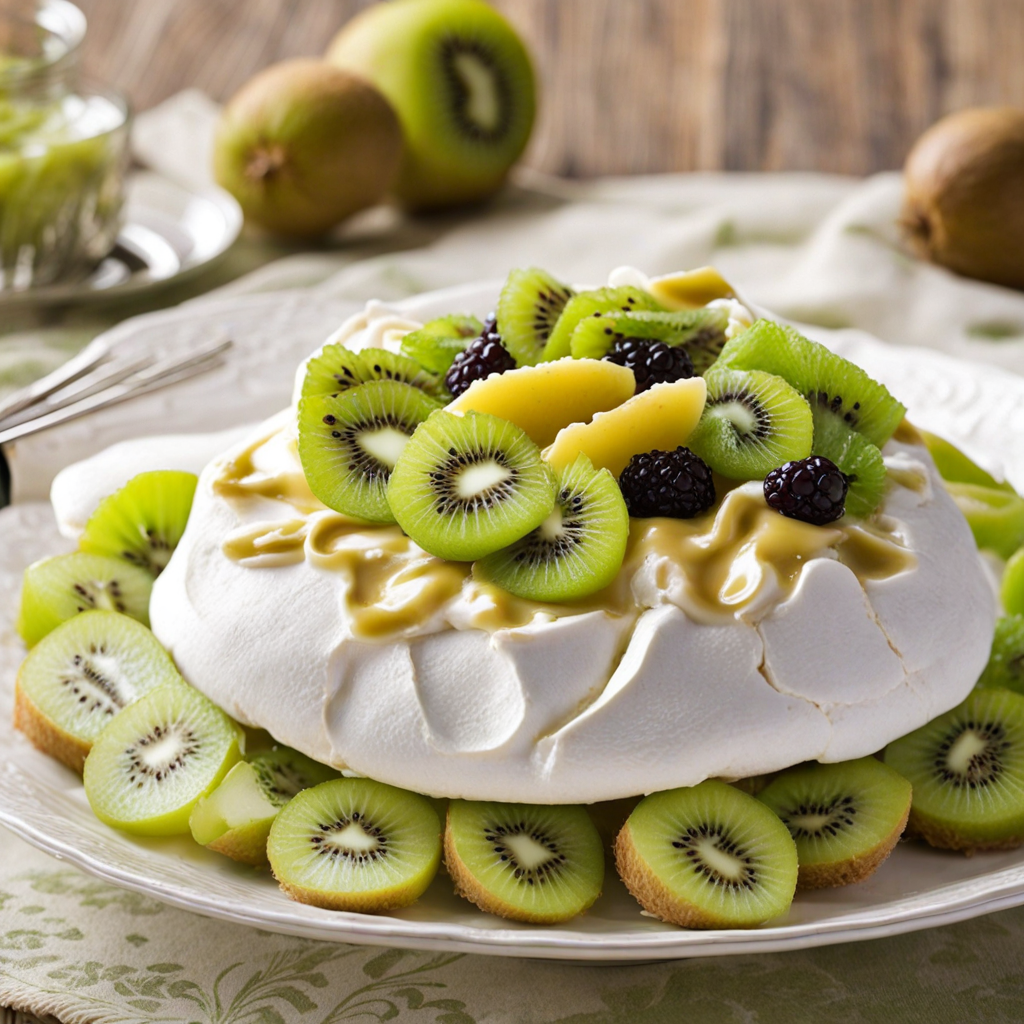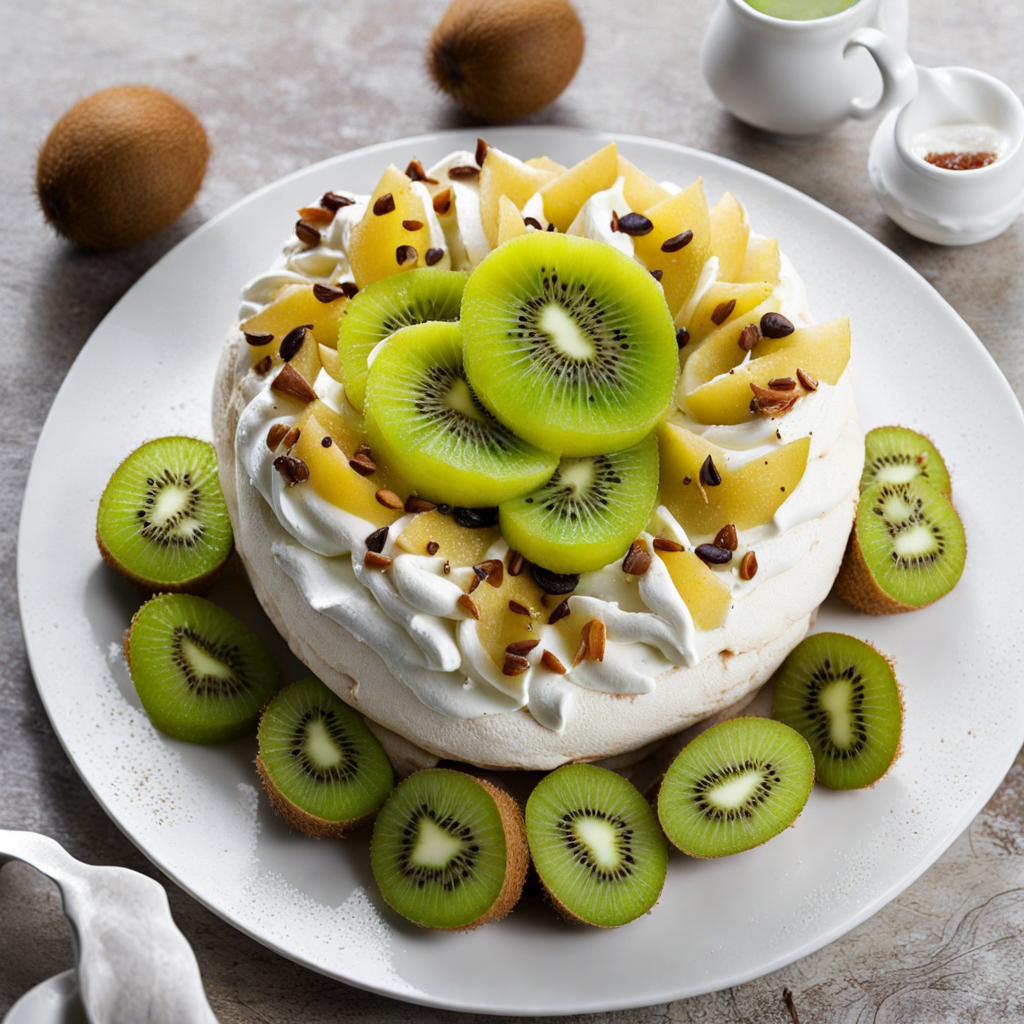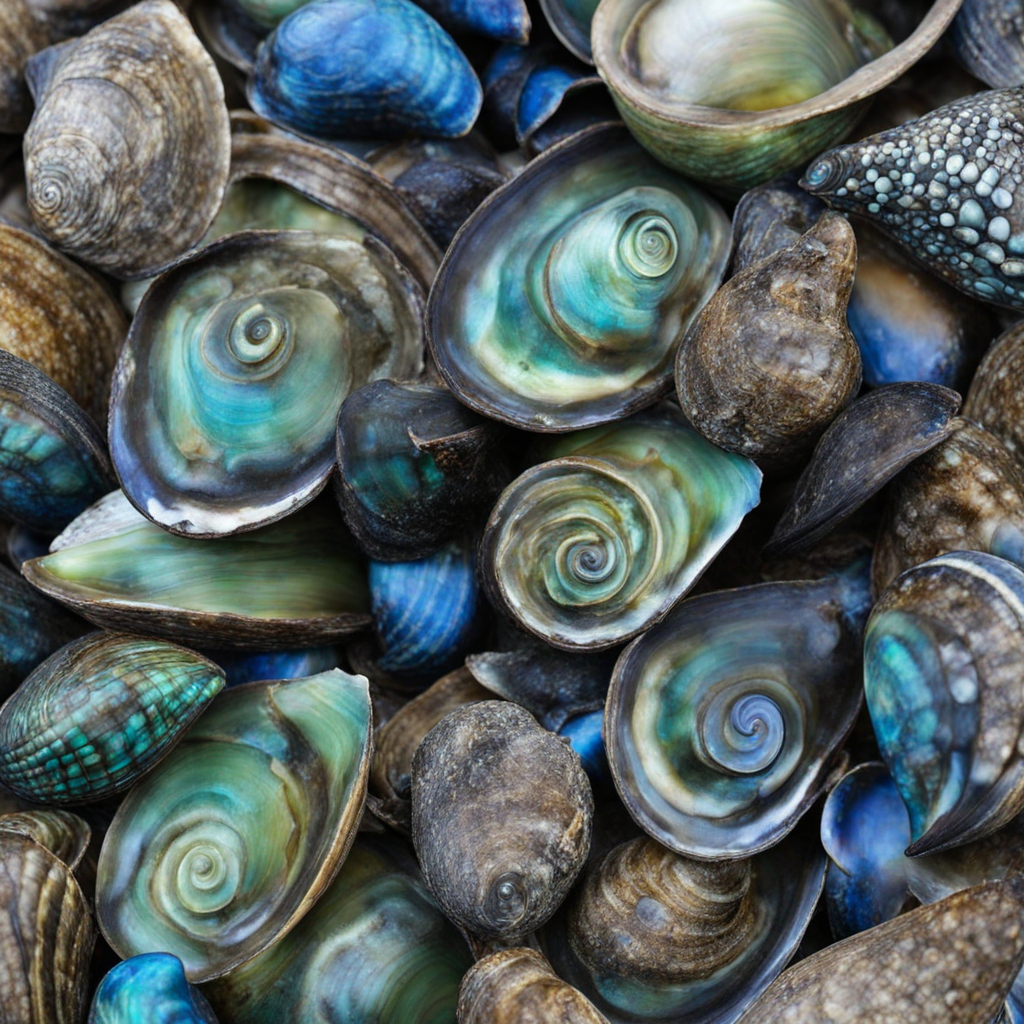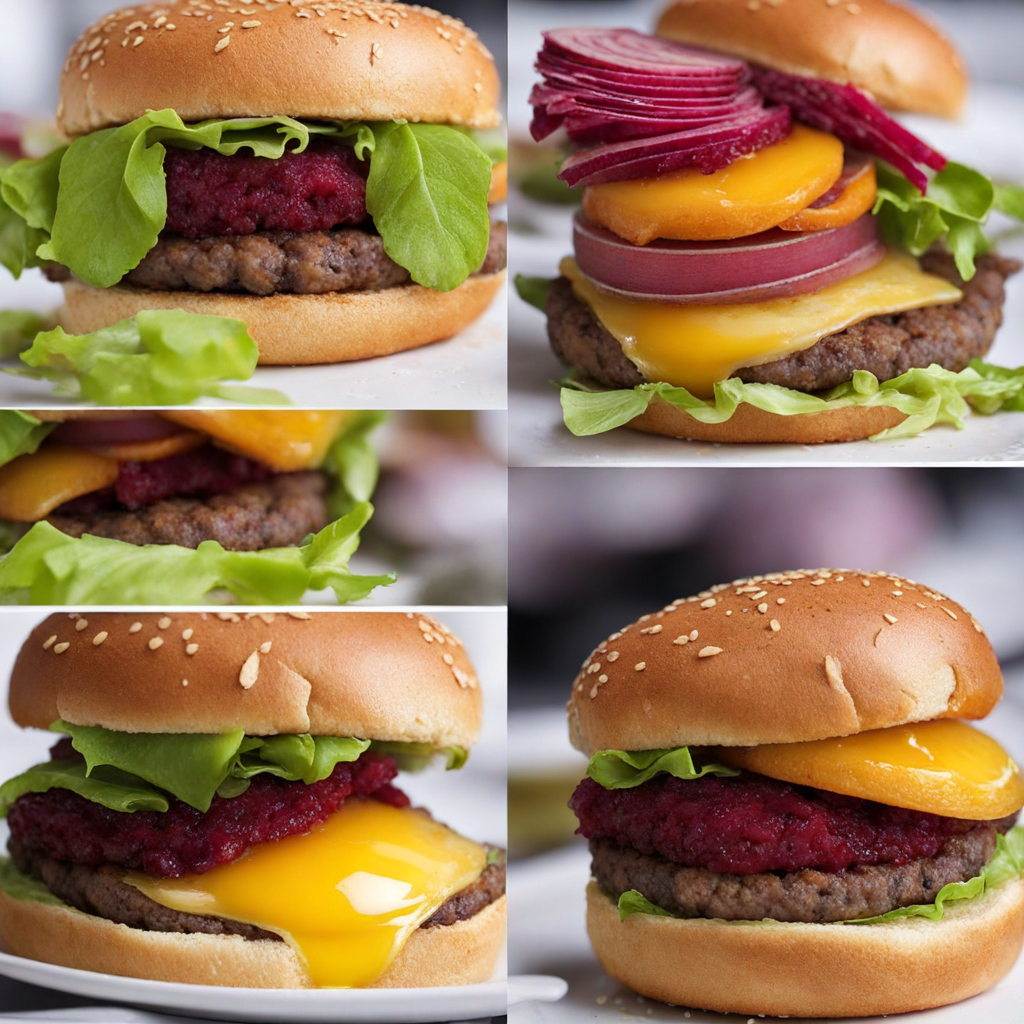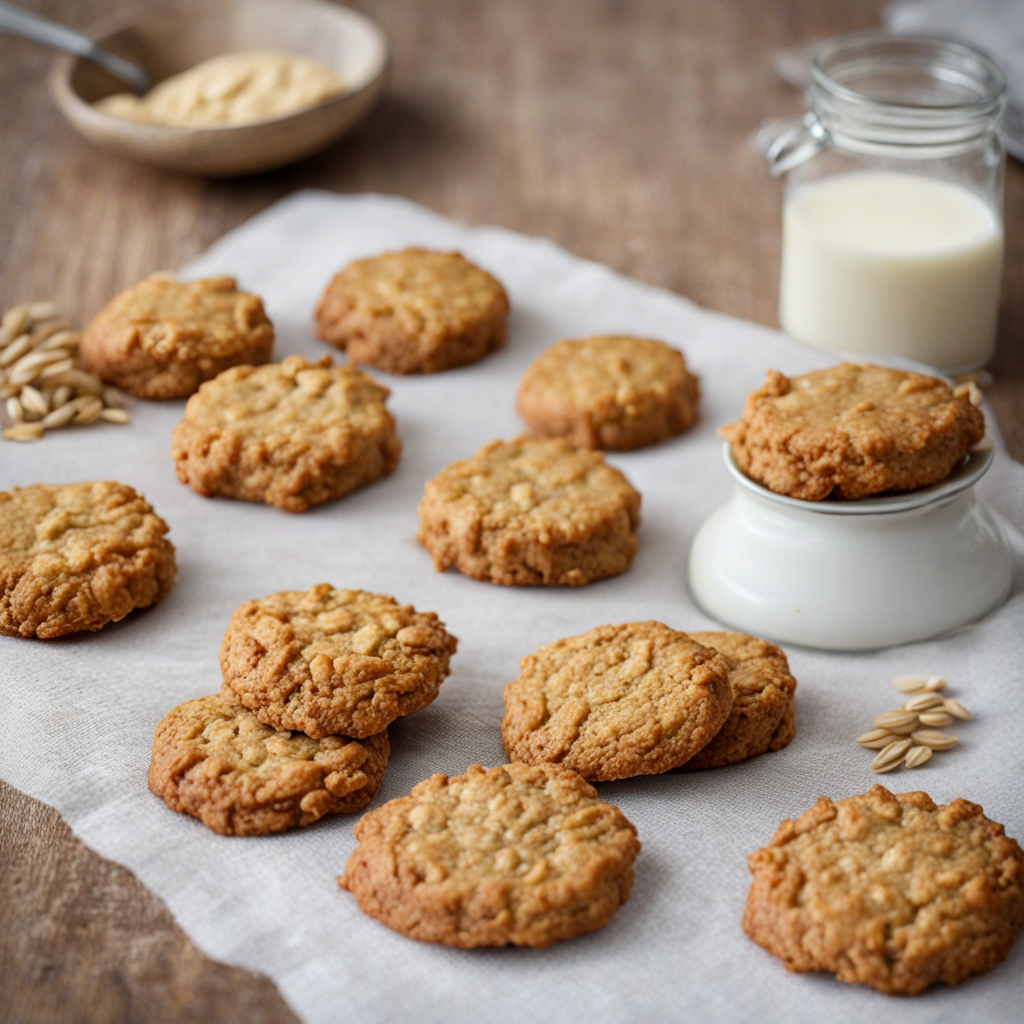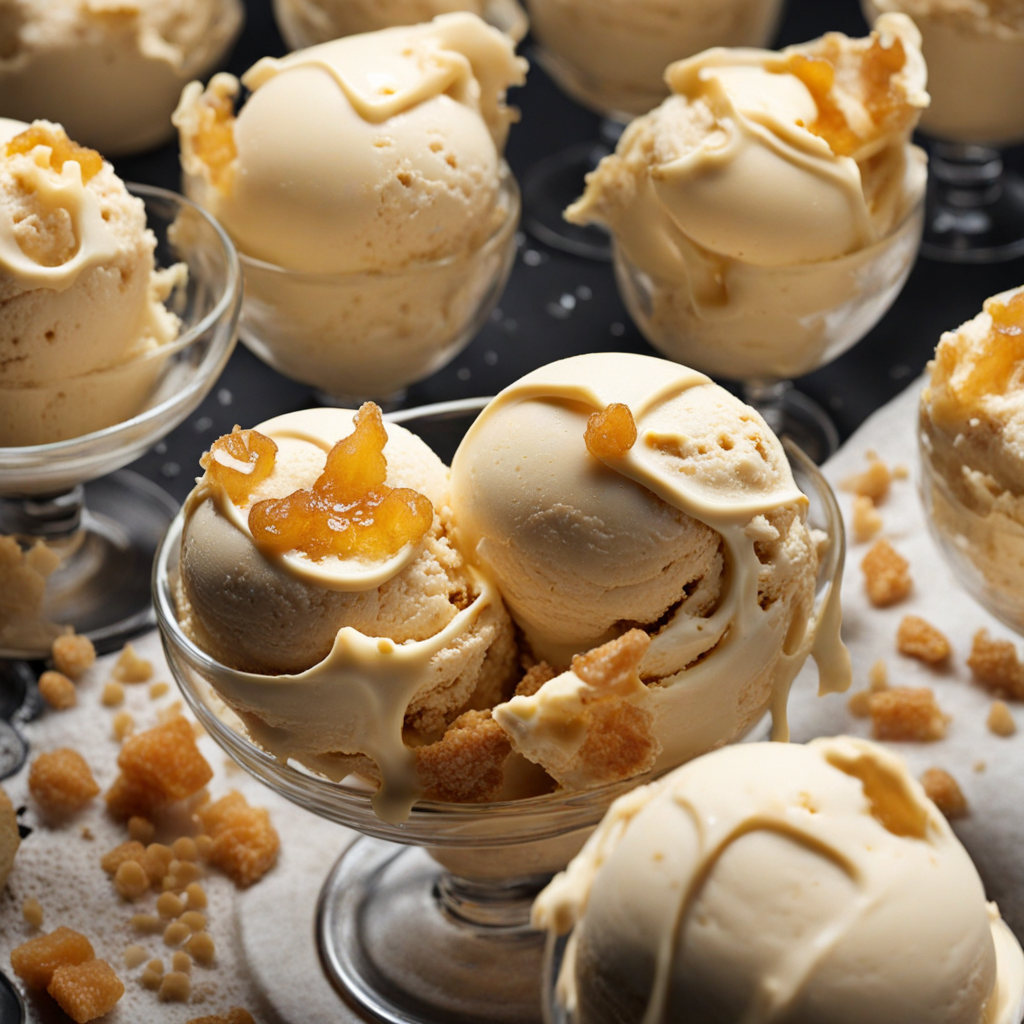Kiwi Pavlova
Kiwi Pavlova is a delightful dessert that beautifully showcases the vibrant flavors of New Zealand. At its core, this dish is a meringue-based dessert, crispy on the outside and soft and marshmallow-like on the inside. The meringue is made from whipped egg whites and sugar, creating a light, airy texture that almost melts in your mouth. The subtle sweetness of the meringue perfectly complements the fresh and tangy toppings that adorn it, making each bite a harmonious blend of flavors and textures. The pièce de résistance of Kiwi Pavlova is undoubtedly the topping. Traditionally, it is embellished with a generous layer of whipped cream, which adds a rich and creamy element to the dish. But what truly sets it apart is the vibrant array of fresh fruits, with kiwis being the star of the show. Their bright green flesh and unique tartness create a refreshing contrast to the sweetness of the meringue and the cream. Alongside kiwis, you might also find other seasonal fruits such as strawberries, passionfruit, or blueberries, each contributing their own flavor and color, transforming the Pavlova into a visually stunning dessert. Enjoying a slice of Kiwi Pavlova is an experience for the senses. The crisp exterior gives way to a soft, chewy interior, while the luscious cream and vibrant fruits create a delightful explosion of flavors. It is a dessert that celebrates the bounty of New Zealand's fresh produce and embodies the spirit of indulgence without being overly rich. Perfect for any occasion, Kiwi Pavlova is not just a treat but a delightful journey into the heart of New Zealand's culinary delights.
How It Became This Dish
The History of Kiwi Pavlova: A Culinary Icon of New Zealand #### Origins of Pavlova The story of Pavlova, a delectable meringue-based dessert topped with whipped cream and fresh fruits, is steeped in a rich tapestry of cultural significance and culinary evolution. Named after the famous Russian ballerina Anna Pavlova, the dessert is believed to have originated in the early 20th century, with disputes over its true birthplace igniting passionate debates between New Zealand and Australia. While the exact date of creation remains uncertain, culinary historians suggest that Pavlova was first crafted during the 1920s, when Anna Pavlova toured both countries. The meringue dessert was likely created to honor the ballerina, reflecting her light, ethereal presence on stage. Much like Pavlova herself, the dessert is delicate and graceful, with a crisp exterior and a soft, marshmallow-like center. #### Cultural Significance For New Zealanders, Pavlova is more than just a dessert; it embodies national pride and cultural identity. The dessert has become a staple at celebrations, gatherings, and festive occasions, often gracing tables during Christmas, birthdays, and anniversaries. Its presence at these events underscores its significance in the social fabric of New Zealand, serving as a symbol of hospitality and celebration. The debate over the origins of Pavlova has fueled a sense of camaraderie among New Zealanders, who staunchly defend their claim to the dessert. Many New Zealanders believe that Pavlova is intrinsically tied to their national identity, with recipes and variations being passed down through generations, each family adding their unique twist. #### Development Over Time Initially, Pavlova was a simple dessert, featuring a meringue base topped with whipped cream and seasonal fruits. The classic version, often adorned with kiwifruit, strawberries, and passionfruit, showcases the vibrant produce that New Zealand has to offer. The meringue itself is made from egg whites and sugar, whipped to stiff peaks and baked at a low temperature to achieve its characteristic texture. As culinary influences evolved and New Zealand cuisine became more diverse, so too did the variations of Pavlova. Chefs began to experiment with flavors, incorporating local ingredients and international influences. Today, one might find Pavlova adorned with tropical fruits like mango and pineapple or flavored with chocolate, matcha, or even lavender. Each iteration reflects the ever-changing landscape of New Zealand’s culinary scene, where traditional recipes harmonize with modern techniques and global flavors. #### The Kiwifruit Connection One cannot discuss Kiwi Pavlova without mentioning the kiwifruit, a quintessential New Zealand ingredient. Originally imported from China in the early 20th century, the kiwifruit flourished in New Zealand’s climate and became a symbol of the nation’s agricultural prowess. The fruit’s bright green color and unique flavor make it a perfect complement to the sweet, airy meringue of Pavlova. The combination of kiwifruit and Pavlova has become iconic, with many New Zealanders insisting that the two are inseparable. The dessert not only showcases the country’s agricultural bounty but also highlights the innovative spirit of New Zealand cuisine, which embraces local ingredients and celebrates seasonal produce. #### Evolution in Presentation and Popularity In the late 20th and early 21st centuries, Pavlova gained international recognition, appearing on dessert menus around the world. This newfound popularity prompted chefs to elevate the presentation of Pavlova, turning it into an art form. Modern interpretations often feature intricate designs, with layers of meringue, elegantly piped whipped cream, and artistic arrangements of fruits. Social media platforms have played a significant role in the revival and reimagining of Pavlova, with food bloggers and influencers showcasing their creative renditions. The hashtag #PavlovaChallenge has even emerged, inviting bakers to experiment with flavors, colors, and presentations, further solidifying Pavlova’s status as a beloved dessert both in New Zealand and abroad. #### Pavlova in Contemporary New Zealand Cuisine Today, Pavlova continues to evolve within New Zealand's vibrant food culture. It has transcended its classic form, becoming a canvas for culinary creativity. Chefs are increasingly drawing inspiration from global cuisines, incorporating elements such as spices, herbs, and unconventional flavor combinations. Recent trends also highlight the growing interest in plant-based and gluten-free diets. As a naturally gluten-free dessert, Pavlova has adapted well to these dietary preferences, with many chefs creating vegan versions using aquafaba (the liquid from canned chickpeas) as a substitute for egg whites. This adaptation showcases the dessert’s versatility and its ability to resonate with contemporary culinary movements. #### Conclusion The Kiwi Pavlova, with its delicate meringue, luscious cream, and vibrant fruit, is a dessert rich in history, culture, and evolving flavors. Its origins, linked to the iconic ballerina Anna Pavlova, are a testament to the enduring influence of cultural exchange in the culinary world. As a symbol of New Zealand’s national identity, Pavlova holds a special place in the hearts of many New Zealanders, representing not only a beloved dessert but also a sense of community and pride. Its journey from a simple meringue creation to a globally recognized dessert exemplifies the dynamic nature of food, where tradition meets innovation, and where flavors and cultures intertwine. As we savor a slice of Kiwi Pavlova, we partake in a narrative that transcends borders, celebrating the spirit of creativity and the joy of shared experiences that food brings to our lives. Whether enjoyed at a holiday gathering, a summer barbecue, or a simple family dinner, Pavlova remains a delightful reminder of the sweetness of life and the bonds that unify us through food.
You may like
Discover local flavors from New Zealand


